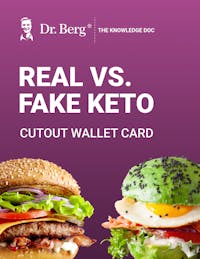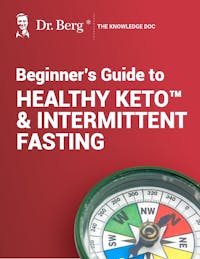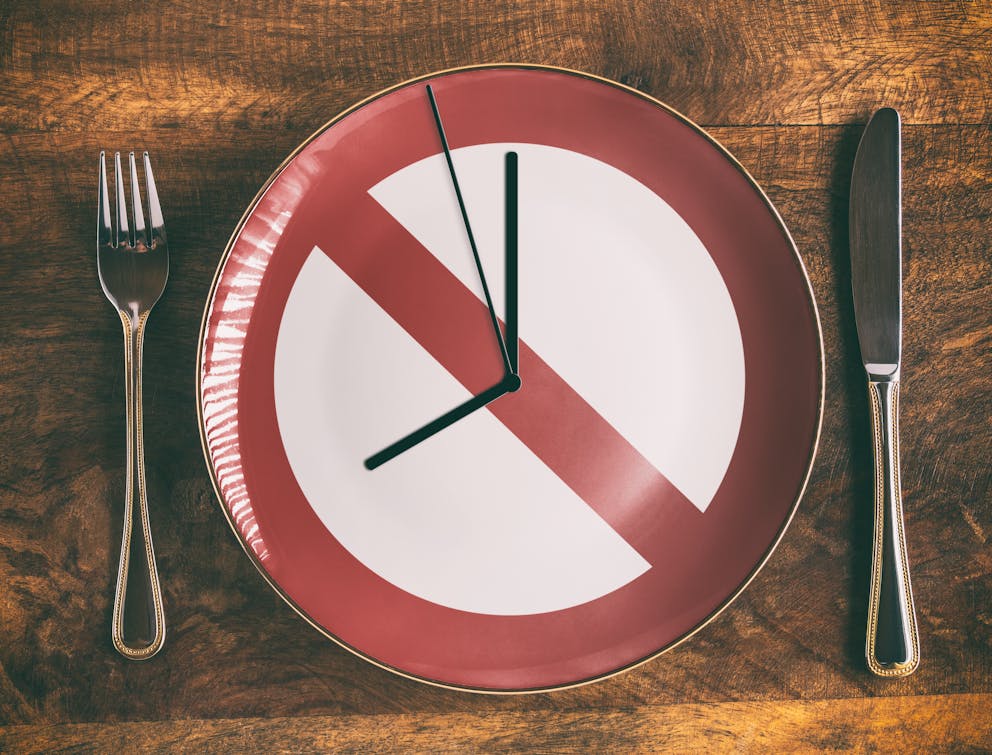24-Hour Fasting Benefits and Risks

Keto vs. Non-Keto
Quickly compare keto-friendly foods with non-keto options for easy reference
Use this wallet card to make informed food choices while shopping or dining out
Identify fake keto foods and ingredients that you should avoid
Simplify decision-making with clear, practical guidelines

Keto vs. Non-Keto
Quickly compare keto-friendly foods with non-keto options for easy reference
Use this wallet card to make informed food choices while shopping or dining out
Identify fake keto foods and ingredients that you should avoid
Simplify decision-making with clear, practical guidelines

Keto vs. Non-Keto
Quickly compare keto-friendly foods with non-keto options for easy reference
Use this wallet card to make informed food choices while shopping or dining out
Identify fake keto foods and ingredients that you should avoid
Simplify decision-making with clear, practical guidelines

Keto vs. Non-Keto
Quickly compare keto-friendly foods with non-keto options for easy reference
Use this wallet card to make informed food choices while shopping or dining out
Identify fake keto foods and ingredients that you should avoid
Simplify decision-making with clear, practical guidelines

Keto vs. Non-Keto
Quickly compare keto-friendly foods with non-keto options for easy reference
Use this wallet card to make informed food choices while shopping or dining out
Identify fake keto foods and ingredients that you should avoid
Simplify decision-making with clear, practical guidelines

Keto vs. Non-Keto
Quickly compare keto-friendly foods with non-keto options for easy reference
Use this wallet card to make informed food choices while shopping or dining out
Identify fake keto foods and ingredients that you should avoid
Simplify decision-making with clear, practical guidelines

Keto vs. Non-Keto
Quickly compare keto-friendly foods with non-keto options for easy reference
Use this wallet card to make informed food choices while shopping or dining out
Identify fake keto foods and ingredients that you should avoid
Simplify decision-making with clear, practical guidelines

Keto vs. Non-Keto
Quickly compare keto-friendly foods with non-keto options for easy reference
Use this wallet card to make informed food choices while shopping or dining out
Identify fake keto foods and ingredients that you should avoid
Simplify decision-making with clear, practical guidelines

Keto vs. Non-Keto
Quickly compare keto-friendly foods with non-keto options for easy reference
Use this wallet card to make informed food choices while shopping or dining out
Identify fake keto foods and ingredients that you should avoid
Simplify decision-making with clear, practical guidelines

Keto vs. Non-Keto
Quickly compare keto-friendly foods with non-keto options for easy reference
Use this wallet card to make informed food choices while shopping or dining out
Identify fake keto foods and ingredients that you should avoid
Simplify decision-making with clear, practical guidelines

Keto vs. Non-Keto
Quickly compare keto-friendly foods with non-keto options for easy reference
Use this wallet card to make informed food choices while shopping or dining out
Identify fake keto foods and ingredients that you should avoid
Simplify decision-making with clear, practical guidelines

Keto vs. Non-Keto
Quickly compare keto-friendly foods with non-keto options for easy reference
Use this wallet card to make informed food choices while shopping or dining out
Identify fake keto foods and ingredients that you should avoid
Simplify decision-making with clear, practical guidelines

Keto vs. Non-Keto
Quickly compare keto-friendly foods with non-keto options for easy reference
Use this wallet card to make informed food choices while shopping or dining out
Identify fake keto foods and ingredients that you should avoid
Simplify decision-making with clear, practical guidelines

Keto vs. Non-Keto
Quickly compare keto-friendly foods with non-keto options for easy reference
Use this wallet card to make informed food choices while shopping or dining out
Identify fake keto foods and ingredients that you should avoid
Simplify decision-making with clear, practical guidelines

Keto vs. Non-Keto
Quickly compare keto-friendly foods with non-keto options for easy reference
Use this wallet card to make informed food choices while shopping or dining out
Identify fake keto foods and ingredients that you should avoid
Simplify decision-making with clear, practical guidelines

Keto vs. Non-Keto
Quickly compare keto-friendly foods with non-keto options for easy reference
Use this wallet card to make informed food choices while shopping or dining out
Identify fake keto foods and ingredients that you should avoid
Simplify decision-making with clear, practical guidelines

Keto vs. Non-Keto
Quickly compare keto-friendly foods with non-keto options for easy reference
Use this wallet card to make informed food choices while shopping or dining out
Identify fake keto foods and ingredients that you should avoid
Simplify decision-making with clear, practical guidelines

Keto vs. Non-Keto
Quickly compare keto-friendly foods with non-keto options for easy reference
Use this wallet card to make informed food choices while shopping or dining out
Identify fake keto foods and ingredients that you should avoid
Simplify decision-making with clear, practical guidelines

Keto vs. Non-Keto
Quickly compare keto-friendly foods with non-keto options for easy reference
Use this wallet card to make informed food choices while shopping or dining out
Identify fake keto foods and ingredients that you should avoid
Simplify decision-making with clear, practical guidelines

Beginner’s Guide to Healthy Keto & Intermittent Fasting
Receive a step-by-step guide to starting Healthy Keto® and intermittent fasting
Learn about foundational principles and best practices for beginners
Get detailed visual guidance on portion sizes and meal composition
Discover how to set achievable goals and monitor your progress
Find practical tips for overcoming common challenges and staying motivated

Beginner’s Guide to Healthy Keto & Intermittent Fasting
Receive a step-by-step guide to starting Healthy Keto® and intermittent fasting
Learn about foundational principles and best practices for beginners
Get detailed visual guidance on portion sizes and meal composition
Discover how to set achievable goals and monitor your progress
Find practical tips for overcoming common challenges and staying motivated

Beginner’s Guide to Healthy Keto & Intermittent Fasting
Receive a step-by-step guide to starting Healthy Keto® and intermittent fasting
Learn about foundational principles and best practices for beginners
Get detailed visual guidance on portion sizes and meal composition
Discover how to set achievable goals and monitor your progress
Find practical tips for overcoming common challenges and staying motivated

Beginner’s Guide to Healthy Keto & Intermittent Fasting
Receive a step-by-step guide to starting Healthy Keto® and intermittent fasting
Learn about foundational principles and best practices for beginners
Get detailed visual guidance on portion sizes and meal composition
Discover how to set achievable goals and monitor your progress
Find practical tips for overcoming common challenges and staying motivated

Beginner’s Guide to Healthy Keto & Intermittent Fasting
Receive a step-by-step guide to starting Healthy Keto® and intermittent fasting
Learn about foundational principles and best practices for beginners
Get detailed visual guidance on portion sizes and meal composition
Discover how to set achievable goals and monitor your progress
Find practical tips for overcoming common challenges and staying motivated

Beginner’s Guide to Healthy Keto & Intermittent Fasting
Receive a step-by-step guide to starting Healthy Keto® and intermittent fasting
Learn about foundational principles and best practices for beginners
Get detailed visual guidance on portion sizes and meal composition
Discover how to set achievable goals and monitor your progress
Find practical tips for overcoming common challenges and staying motivated

Beginner’s Guide to Healthy Keto & Intermittent Fasting
Receive a step-by-step guide to starting Healthy Keto® and intermittent fasting
Learn about foundational principles and best practices for beginners
Get detailed visual guidance on portion sizes and meal composition
Discover how to set achievable goals and monitor your progress
Find practical tips for overcoming common challenges and staying motivated

Beginner’s Guide to Healthy Keto & Intermittent Fasting
Receive a step-by-step guide to starting Healthy Keto® and intermittent fasting
Learn about foundational principles and best practices for beginners
Get detailed visual guidance on portion sizes and meal composition
Discover how to set achievable goals and monitor your progress
Find practical tips for overcoming common challenges and staying motivated

Beginner’s Guide to Healthy Keto & Intermittent Fasting
Receive a step-by-step guide to starting Healthy Keto® and intermittent fasting
Learn about foundational principles and best practices for beginners
Get detailed visual guidance on portion sizes and meal composition
Discover how to set achievable goals and monitor your progress
Find practical tips for overcoming common challenges and staying motivated

Beginner’s Guide to Healthy Keto & Intermittent Fasting
Receive a step-by-step guide to starting Healthy Keto® and intermittent fasting
Learn about foundational principles and best practices for beginners
Get detailed visual guidance on portion sizes and meal composition
Discover how to set achievable goals and monitor your progress
Find practical tips for overcoming common challenges and staying motivated

Beginner’s Guide to Healthy Keto & Intermittent Fasting
Receive a step-by-step guide to starting Healthy Keto® and intermittent fasting
Learn about foundational principles and best practices for beginners
Get detailed visual guidance on portion sizes and meal composition
Discover how to set achievable goals and monitor your progress
Find practical tips for overcoming common challenges and staying motivated

Beginner’s Guide to Healthy Keto & Intermittent Fasting
Receive a step-by-step guide to starting Healthy Keto® and intermittent fasting
Learn about foundational principles and best practices for beginners
Get detailed visual guidance on portion sizes and meal composition
Discover how to set achievable goals and monitor your progress
Find practical tips for overcoming common challenges and staying motivated

Beginner’s Guide to Healthy Keto & Intermittent Fasting
Receive a step-by-step guide to starting Healthy Keto® and intermittent fasting
Learn about foundational principles and best practices for beginners
Get detailed visual guidance on portion sizes and meal composition
Discover how to set achievable goals and monitor your progress
Find practical tips for overcoming common challenges and staying motivated

Beginner’s Guide to Healthy Keto & Intermittent Fasting
Receive a step-by-step guide to starting Healthy Keto® and intermittent fasting
Learn about foundational principles and best practices for beginners
Get detailed visual guidance on portion sizes and meal composition
Discover how to set achievable goals and monitor your progress
Find practical tips for overcoming common challenges and staying motivated

Beginner’s Guide to Healthy Keto & Intermittent Fasting
Receive a step-by-step guide to starting Healthy Keto® and intermittent fasting
Learn about foundational principles and best practices for beginners
Get detailed visual guidance on portion sizes and meal composition
Discover how to set achievable goals and monitor your progress
Find practical tips for overcoming common challenges and staying motivated

Beginner’s Guide to Healthy Keto & Intermittent Fasting
Receive a step-by-step guide to starting Healthy Keto® and intermittent fasting
Learn about foundational principles and best practices for beginners
Get detailed visual guidance on portion sizes and meal composition
Discover how to set achievable goals and monitor your progress
Find practical tips for overcoming common challenges and staying motivated

Beginner’s Guide to Healthy Keto & Intermittent Fasting
Receive a step-by-step guide to starting Healthy Keto® and intermittent fasting
Learn about foundational principles and best practices for beginners
Get detailed visual guidance on portion sizes and meal composition
Discover how to set achievable goals and monitor your progress
Find practical tips for overcoming common challenges and staying motivated

Beginner’s Guide to Healthy Keto & Intermittent Fasting
Receive a step-by-step guide to starting Healthy Keto® and intermittent fasting
Learn about foundational principles and best practices for beginners
Get detailed visual guidance on portion sizes and meal composition
Discover how to set achievable goals and monitor your progress
Find practical tips for overcoming common challenges and staying motivated

Beginner’s Guide to Healthy Keto & Intermittent Fasting
Receive a step-by-step guide to starting Healthy Keto® and intermittent fasting
Learn about foundational principles and best practices for beginners
Get detailed visual guidance on portion sizes and meal composition
Discover how to set achievable goals and monitor your progress
Find practical tips for overcoming common challenges and staying motivated
A 24-hour fast is a popular form of intermittent fasting that offers impressive health benefits.
Extended periods of calorie restriction push your metabolism to burn stored body fat as a fuel source which supports healthy body weight and is linked to a lower risk of insulin resistance and heart disease.
Learn how to get started with prolonged fasting and discover why a 24-hour fast can have profound anti-aging effects.

What is a 24-hour fast?
A 24-hour fast involves abstaining from all foods and only drinking zero-calorie beverages such as water or unsweetened herbal teas for 24 hours.
While some people do a 24-hour fast once a week to lower their overall calorie intake, others practice this type of fast once a month or whenever needed.
Extended periods of fasting flip a metabolic switch that pushes your metabolism to convert body fat into energy. As your liver breaks down stored fats, it generates large amounts of ketones, a by-product of fat-burning and a very efficient energy source.
When your cells begin to utilize ketones as a primary fuel source, your metabolism enters a state known as ketosis. Ketosis doesn’t just help you lose weight but has profound benefits for cellular and metabolic health.
Intermittent fasting plans, such as 24-hour fasting and 16:8—16 hours of fasting followed by an eight-hour eating window—have gained popularity due to their potential benefits, including improved blood sugar control, enhanced cellular repair processes, and healthy brain function.
In fact, research published in Nutrients concludes, “24-hour fasting may result in decreased insulin resistance, increased lipid metabolism, decreased weight and body fat, lower levels of depression, and increased cognitive performance.”
Watch the video below to discover the key benefits of fasting for 24 hours.
Seven benefits of 24-hour fasting
From an evolutionary point of view, the body is much better adapted to extended periods of calorie restriction than consuming too much food daily.
“The increasing prevalence of metabolic disorders and chronic diseases linked to excessive calorie intake speaks for itself,” explains Dr. Berg. “Fasting offers an antidote to this trend and significantly lowers the risk of lifestyle diseases including heart disease, obesity, metabolic syndrome, and diabetes.”
Here are seven potential health benefits of fasting for 24 hours.
1. Weight loss
It’s well understood that fasting promotes weight loss and aids weight maintenance, which is crucial for preventing or managing conditions such as obesity and metabolic syndrome.
Fasting forces your liver to utilize stored body fat as a fuel source, thereby reducing fat mass and promoting weight loss. While weight loss depends on many factors, most people tend to lose between two to three pounds during a 24-hour fast.
In addition, fasting has been shown to significantly increase levels of human growth hormone (HGH), which accelerates fat burning and helps to prevent muscle loss while fasting.
2. Metabolic health
Regular fasting can reverse blood sugar imbalances and insulin resistance, the primary risk factors for diabetes, and it’s thought that fasting could replace insulin for diabetics.
Excess body fat can interfere with normal cellular function and impairs insulin sensitivity—a measure of how responsive your cells are to insulin’s effects on blood sugar regulation.
Research published in Clinical Diabetes and Endocrinology reports that fasting’s weight loss effects enhance the communication between insulin and peripheral cells, which promotes normal insulin levels needed to regulate blood sugar levels.
3. Autophagy
Fasting for extended periods stimulates a cellular process known as autophagy.
Autophagy involves breaking down and recycling damaged or dysfunctional cell components, including proteins, organelles, and other cellular debris.
This natural mechanism allows cellular renewal and enhances overall cellular health, linked to a lower risk of cancer, cardiovascular disease, and age-related diseases.
Increasing the rate of autophagy has profound anti-aging effects. Cellular rejuvenation helps replace worn-out cellular components with functional ones, which slows down cellular aging and promotes longevity.

4. Brain health
Prolonged fasting positively affects the brain by promoting the normal function of brain cells and stimulating the growth of new nerve cells.
Fasting directly increases the production of brain-derived neurotrophic factor (BDNF), a protein that supports the growth, survival, and function of neurons in the brain.
And, what’s more, fasting’s autophagy-stimulating effects are believed to lower the risk of neurodegenerative diseases such as Alzheimer's and dementia and may explain why fasting can reverse poor memory from aging.
Autophagy has been found to initiate the removal of amyloid plaques, which are tangled protein bundles in the brain that can interfere with normal brain function and contribute to memory loss and declining cognitive functioning.
5. Digestive health
Fasting is a great option to support the health of your digestive system.
During fasting periods, your digestive tract can rest, which allows the delicate lining of your small intestines to heal. This enhances nutrient absorption and strengthens the gut’s immune defenses.
There is also evidence that fasting benefits the composition of microbes in your gut. Fasting for more than 20 hours can increase concentrations of beneficial bacteria while lowering levels of potentially harmful microbes.
It’s believed that fasting's benefits for digestive health are linked to a lower risk of inflammatory bowel disease (IBD) and Crohn's disease.
6. Anti-inflammatory
Prolonged fasting can lower chronic inflammation and may help manage inflammatory conditions such as rheumatoid arthritis, psoriasis, multiple sclerosis, and IBD.
Metabolic processes that convert sugar into energy generate reactive oxygen species (ROS), a group of volatile metabolic by-products that cause cellular damage and can overwhelm the body's anti-inflammatory defenses, leading to chronic inflammation.
Fasting, especially in combination with a low-carb diet, naturally lowers ROS levels and can reduce inflammation by dampening the body’s overall load of inflammatory compounds.
7. Cardiovascular health
Prolonged and intermittent fasting can manage several risk factors linked to cardiovascular diseases.
Fasting supports weight loss, improves metabolic health, stimulates autophagy, and lowers inflammation. The combination of these benefits helps to keep the heart and blood vessels healthy and significantly lowers the risk of coronary artery disease, heart attack, and stroke.
 What can you eat and drink during a 24-hour fast?
What can you eat and drink during a 24-hour fast?
During a 24-hour fast, the general rule is to avoid calorie intake for 24 hours, which involves abstaining from all foods and only drinking water, unsweetened herbal teas, or black coffee.
Staying well hydrated is crucial during a 24-hour fast to avoid dehydration, muscle cramps, and dizzy spells. Drinking lemon water while fasting is a great option to boost vitamin C levels while maintaining healthy fluid levels.
Supplements are often overlooked when it comes to fasting. While some supplements can enhance the metabolic benefits of fasting, many protein powders, vitamin gummies, and liquid vitamins are packed with sugars and carbs that can break your fast.
Watch the video below to discover what happens to the body if you fast for prolonged periods.
How to get started
Not eating for a day may seem challenging, but you can take plenty of steps to make the transition into a 24-hour fast easy.
Here are some tips on how to start a 24-hour fast!
Slowly adapt to fasting
If you are new to prolonged fasting, it’s essential to allow your body time to adapt to extended periods of caloric restriction.
It’s generally recommended to start with a 16:8 intermittent fasting schedule to gradually extend your fasting periods or follow one meal a day (OMAD) every other day for a week until you are comfortable starting a 24-hour fast. This primes your body to burn fat and helps to adjust to the metabolic changes of fasting.
Eat nutritious meals before your fast
Eating nutritious, low-carb meals rich in nutrients and healthy fats provides your body with essential nutrients and energy before starting a 24-hour fast.
And, what’s more, healthy fats support satiety during your fast and help to keep hunger and cravings at bay. This may explain why people who follow a nutritious high-fat diet like Healthy Keto® often can fast for longer periods than those on a high-carb diet.
Pick the right time
Most people start a 24-hour fast after eating dinner on the first day and end their fasting period at the same time the next day.
Don’t pick a day that involves a lot of social activities or events for your fast. Ideally, choose a day with little to no commitments, especially if this is your first 24-hour fast, and pay attention to how your body responds.
Fasting can make you irritated and hungry, and it’s best to plan ahead and communicate with friends and family about your needs during your fast.

Risks of 24-hour fasting
Prolonged fasting has amazing benefits and is generally considered safe for most healthy adults. However, not consuming calories for long periods can have potentially adverse effects.
Here are some risks you should be aware of before starting 24-hour fasting
Lack of nutritional reserves
Frequent 24-hour fasts, especially in combination with a poor diet, can lead to nutrient deficiencies that can impact your health.
Eating healthy and nutritious meals before a 24-hour fast supports your nutritional reserve during periods of caloric restriction. This lowers the risk of experiencing fasting side effects such as dizzy spells, light-headedness, low energy, and brain fog.
Dehydration
A 24-hour fast without drinking adequate fluids can quickly lead to dehydration and electrolyte imbalances.
During the first few hours of fasting, your body burns glycogen, a form of glucose bound to water stored in muscles and the liver. As glycogen is utilized, the kidneys eliminate excess fluids, which can cause dehydration. This explains why fasting without adequate hydration can increase the risk of kidney problems and kidney stones.
An increased urine output also causes sodium and potassium excretion, which can lead to electrolyte imbalances associated with irregular heartbeats, fainting, and muscle cramps.
It’s generally advised to avoid dry fasting and consume plenty of calorie-free beverages and choose a sugar-free electrolyte powder to replenish sodium and potassium during your 24-hour fast.
Risk of overeating
Some people are tempted to consume large portions of rich foods after finishing a fast which can cause digestive issues such as bloating, nausea, abdominal pain, and diarrhea.
To safely refeed after your fast, it’s best to start with small and easy-to-digest foods like soup or bone broth and gradually introduce solid foods over several hours.
Watch the video below to learn about the potential risks of prolonged fasting.
Who shouldn't do 24-hour fasting?
Abstaining from eating for 24 hours isn’t suitable for everyone, and some people should avoid fasting.
Pregnancy and breastfeeding are periods of increased caloric needs, and pregnant or breastfeeding mothers aren’t advised to practice prolonged fasting.
Due to the metabolic impact of fasting, it’s crucial to consult with a healthcare provider if you have underlying medical conditions such as diabetes, hypoglycemia (low blood sugar), eating disorders, cardiovascular disease, or kidney problems before considering prolonged fasting.
In addition, certain blood pressure medications and drugs to treat heart disease can increase the risk of sodium and potassium deficiencies during extended periods of fasting.

Key takeaways
24-hour fasting has profound health benefits and is a perfect addition to a healthy lifestyle.
Prolonged fasting has impressive weight loss benefits, triggers cellular rejuvenation and autophagy, supports digestive health, and helps the body fight inflammation.
If you are new to fasting for extended periods, it’s best to slowly ease into a 16:8 intermittent fasting routine and gradually extend your fasting periods until you are comfortable starting a 24-hour fast.
FAQ
1. Is fasting for 24 hours good?
Apart from promoting weight loss, fasting for 24 hours has other health benefits, including supporting metabolic health, lowering inflammation, and allowing the lining of the digestive tract to regenerate.
Fasting also triggers autophagy, a natural process that clears cellular debris and damaged cell components linked to premature aging and an increased risk of age-related diseases and cancer.
2. What does a 24-hour fast do?
Not consuming calories for 24 hours forces your metabolism to utilize stored body fat as a primary fuel source.
Once the liver depletes all the glucose and starts burning fat, ketone levels rise and provide your cells and tissues with energy—this metabolic state is known as ketosis.
3. How much weight can you lose on a 24-hour fast?
How much weight you can lose during a 24-hour fast depends on your metabolism, overall diet, and activity level. However, it’s not uncommon to lose between two to three pounds when fasting for 24 hours.
4. Is fasting for 24 hours safe?
Fasting for 24 hours is generally considered safe for most healthy adults.
However, pregnant or breastfeeding mothers and individuals with eating disorders, type 1 diabetes, kidney disease, and low blood pressure should avoid prolonged fasting.
5. How often should I do a 24-hour fast?
While some people fast for 24 hours once a week, others practice this type of fast once or twice a month or whenever needed.
6. What are the rules for 24-hour fasting?
The basic rules for 24-hour fasting are to abstain from eating food and only drink calorie-free beverages such as water, black coffee, or herbal teas to push your metabolism into a fat-burning mode.
If you are new to prolonged fasting, it’s recommended to slowly prolong your fasting periods until you are comfortable starting a 24-hour fast. This helps your body adapt to the metabolic changes triggered by calorie restriction and minimizes side effects of fasting, such as weakness, fatigue, and dizziness.
7. What should I do after a 24-hour fast?
Eating too much too quickly after a 24-hour fast can cause gastrointestinal issues such as abdominal pain, nausea, and diarrhea.
Start with small and easy-to-digest foods like soups or smoothies and gradually introduce solid foods over several hours.
8. Is a 24 or 36-hour fast better?
Fasting for 36 instead of 24 hours extends the time your body has to rely on stored body fat as an energy source. This enhances fat burning and allows for longer periods of autophagy.
However, fasting for 36 hours may be more challenging than a 24-hour fast, and it’s recommended to gradually increase your fasting periods to help your body to adapt to prolonged calorie restriction.
9. What can I drink during a 24-hour fast?
It’s important to drink plenty of zero-calorie fluids and replenish electrolytes during a 24-hour fast to avoid dehydration and electrolyte imbalances.
To stay hydrated during a 24-hour fast, you can drink water, black coffee, herbal teas, and green tea.
10. What can I eat during a 24-hour fast?
The general rule of a 24-hour fast is to abstain from all foods. However, small amounts of foods like celery and lettuce (without dressing) may not break a fast.
11. What happens if you don’t eat for a day?
Not eating for a day forces your metabolism to tap into stored body fat to generate energy. This helps reduce body fat and can prevent weight gain.
Fasting also triggers several beneficial metabolic and hormonal changes that can lower inflammation, improve metabolic health, stimulate cellular rejuvenation and anti-aging processes, and support normal brain function.
Previous blog
Seven Ashwagandha Benefits for Female HealthTags

Popular
08/21/2024
46.4K views
05/22/2024
40.8K views
11/18/2024
242K views
03/18/2024
11/21/2022




